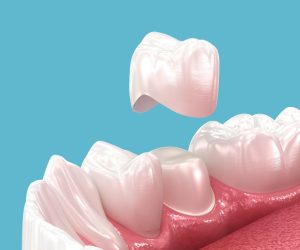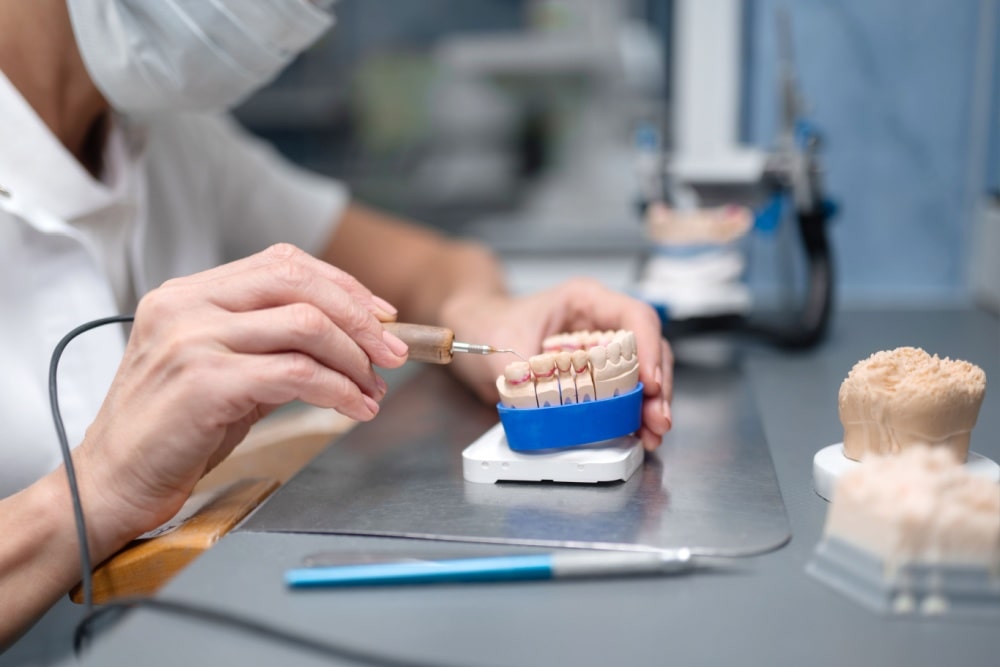If you’ve ever been advised to get a dental crown, you may be curious about what the procedure entails. Dental crowns are a common dental procedure used to restore and protect teeth that are damaged or weakened. Whether you’re dealing with a cracked tooth, a large cavity, or simply looking to enhance your smile, dental crowns can offer an effective solution.
Read on to learn more about the process of getting dental crowns and explore everything you can expect during your appointment.
What Are Dental Crowns?

A dental crown is a specially designed “cap” that fits over a tooth to restore its shape, size, strength, and appearance. They can be made from materials like porcelain, metal, or a combination of the two- depending on the needs of the patient. Crowns are typically recommended when a tooth is too damaged for a filling to repair, or after procedures like a root canal to protect the tooth from further decay or damage.
Why Would You Need a Dental Crown?
Your dentist might recommend a crown for several reasons, including:
- Restoring a broken or cracked tooth: Crowns are ideal for holding together parts of a fractured tooth.
- Protecting a weak tooth: If a tooth is at risk of breaking due to decay, a crown can prevent further damage.
- Supporting a large filling: When a tooth is mostly filling and there’s little natural tooth left, a crown helps maintain its structure.
- After root canal treatment: Teeth that have undergone a root canal often become brittle and need extra protection.
- Cosmetic improvement: Crowns can also be used to cover discoloured or misshapen teeth. This can give them a more aesthetically pleasing appearance.
The Step-by-Step Process of Getting a Dental Crown
The process of getting a dental crown typically involves two appointments, although some dentists can complete the procedure in a single visit using advanced technology.
1. Initial Consultation and Assessment
During your first visit to Pretoria Bridge Dental, your dentist will examine your tooth to determine if a crown is the best option. This might involve taking X-rays to check the root of the tooth and surrounding bone.
2. Tooth Preparation
Once the decision is made to proceed with a crown, your dentist will prepare your tooth. This involves reshaping the tooth by filing down the enamel to make space for the crown. Don’t worry—this part of the process is painless, as a local anesthetic will be used to numb the area.
3. Impressions
Next, your dentist will take an impression of your tooth, which will be used to create the crown. This can be done using a dental putty or with digital scanning technology. The impression ensures that the crown fits perfectly over your tooth and aligns well with your bite.
4. Temporary Crown
If your crown is being made in a dental laboratory, a temporary crown will be placed over your tooth to protect it while you wait for the permanent one. This temporary crown is usually not as durable as the final crown, so it’s important to take care of it by avoiding hard or sticky foods.
5. Fitting the Permanent Crown
Once your permanent crown is ready about two to three weeks, you’ll return for a second appointment. During this visit, the dentist will remove the temporary crown and fit the permanent one. Before cementing it in place, they will ensure that the fit and colour are perfect, making any necessary adjustments.
6. Final Placement
After making sure the crown fits comfortably and matches the surrounding teeth, the dentist will cement it in place. Once secured, you’ll be able to use the tooth just like any other. Dental crowns are durable and, with proper care, can last many years.

Caring for Your Dental Crown
Although crowns are strong and designed to last, they still require care to prevent issues with the underlying tooth. Brushing and flossing around the crown just as you would with your natural teeth is essential. Regular dental check-ups are also important to ensure that the crown and surrounding gum tissue stay healthy.
Potential Risks and Complications
As with any dental procedure, there can be some risks. After getting a crown, it’s common to experience some initial sensitivity, especially to hot or cold temperatures. This usually subsides after a few days. However, if the discomfort persists, it’s a good idea to check in with your dentist. Other complications could include the crown becoming loose or falling off due to the cement wearing down, but this is rare if the crown is well-maintained.
The Benefits of Dental Crowns
Dental crowns are an effective way to restore both the functionality and appearance of a damaged tooth. Some of the key benefits include:
- Improved appearance: Crowns can give you a more uniform and brighter smile.
- Strength and durability: Crowns are made to withstand the forces of chewing and can last 10-15 years or longer with proper care.
- Protection: Crowns help protect your tooth from further damage, decay, and sensitivity.
Alternatives to Dental Crowns
If a dental crown isn’t the right solution for you, other options include dental veneers, which cover only the front surface of a tooth, or dental fillings for smaller cavities. For more extensive damage, your dentist may also suggest a dental bridge or implant to replace the tooth.
We’re Here for All Your Dental Crown Needs
If you think you might need a dental crown or have questions about the procedure, the team at Pretoria Bridge Dental is here to help. Book an appointment today and take the first step towards restoring your smile with professional dental care.
